Day 1 :
Keynote Forum
Jens Ducrée
Full Professor, Dublin City University, Ireland
Keynote: The Microfluidic Lab-on-a-Disc Platform – An Efficient Environment Supporting Rapid Application Development for Decentralised Testing of Biosamples

Biography:
Dr. Jens DucreÌe holds a Full Professorship of Microsystems in the School of Physical Sciences at Dublin City University (DCU), Ireland. He is the founding director of Ireland’s first Fraunhofer Project Centre for Embedded Bioanalytical Systems at DCU (FPC@DCU) – a joint initiative of Science Foundation Ireland and Fraunhofer-Gesellschaft. He is also academic member of the National Centre for Sensor Research (NCSR) and the 3U Joint Institute of Global Health (JIGH), and a principal investigator for Microfluidic Platforms at the Biomedical Diagnostics Institute (BDI) since 2008.
The main part of his research is directed towards novel microfluidic systems and associated actuation, detection, fabrication and instrumentation technologies for the integration, automation, miniaturization and parallelization of sample preparation and detection of bioanalytical assays (e.g. immunoassays, nucleic acid testing, general chemistry and cell counting). Typical applications of these next-generation “Lab-on-a-Chip” platforms are sample-to-answer systems for biomedical point-of-care and global diagnostics, liquid handling automation for the life sciences (e.g. concentration / purification and amplification of DNA / RNA from a range of biosamples), process analytical techniques and cell line development for biopharma as well as monitoring the environment, infrastructure, industrial processes and agrifood.
Abstract:
The successful commercialisation of microfluidics-enabled solutions in the context of the life sciences is typically led by significant techno-economical challenges on performance, reliability and cost of development and manufacture. With the example of the centrifugal microfluidic “Lab-on-a-Disc” technology, this paper outlines a platform-based approach for expediting and de-risking the route from proof-of-concepts to high technology readiness levels as adopted from mature industries. Rather than starting from scratch, new applications are flexibly configured from a geometrically parametrised design library of Laboratory Unit Operations, e.g. for particle separation, metering and mixing, that are interconnected by flow control elements such as valves for comprehensive sample-to-answer automation of common (bio-)assay protocols, e.g. for small molecules, proteins / antibodies, nucleic acids and bioparticles such as cells. The development kit encompasses experimental and simulation tools to validate functional robustness, guidelines for design and scale-up of manufacture, and standard procedures for system- and component-level characterisation. The modular strategy also offers opportunity towards accelerating regulatory processes and for coordinating industrial supply chains.
Keynote Forum
Tianhong Cui
Distinguished McKnight University Professor, University of Minnesota, USA
Keynote: Shrink polymer biosensors: Manufacturing from micro to nano

Biography:
Dr.Tianhong Cui is currently a Distinguished McKnight University Professor at the University of Minnesota. He is a Professor in Mechanical Engineering and an Affiliate Senior Member of the graduate faculty in Department of Electrical Engineering and Department of Biomedical Engineering. He joined the faculty of the University of Minnesota in 2003. From 1995 to 2003, he held research or faculty positions at Tsinghua University, University of Minnesota, National Laboratory of Metrology in Japan, and Louisiana Tech University. He is an Adjunct Professor at Mayo Clinic, a Distinguished Visiting Fellow at the University of Cambridge, and a Laureate of Blaise Pascal Chair from the ENS Foundation in France. He is a Fellow of American Society of Mechanical Engineering (ASME).
His current research interests include MEMS and nanotechnology. He has more than 310 archived publications in scientific journals and prestigious conferences. He received awards including the STA & NEDO Fellowships in Japan, the Alexander von Humboldt Fellowship in Germany, the Research Foundation Award from Louisiana Tech University, the Richard & Barbara Endowed Chair and the Distinguished McKnight University Professorship from the University of Minnesota, the Distinguished Visiting Professorships from University of Paris East and Tsinghua University, the Blaise Pascal Chair for Excellence from ENS Foundation in France, the Distinguished Visiting Fellowship from the Royal Academy of Engineering in UK, the Outstanding Editor Award from Chinese Academy of Sciences/ Nature Publishing Group, and numerous best paper awards. He is the founding Executive Editor-in-Chief for two Nature journals, Light: Science & Applications and Microsystems & Nanoengineering. He is also serving as the founding Editor-in-Chief for the first AAAS/Science Partner Journal titled Research.
Abstract:
Polymer shrinkage becomes a new approach to do lithography and generate smaller structures by reforming larger pre-patterned structures. The facile polymer fabrication approach by embossing and thermoplastic shrinkage aims to do lithography in a nanoscale or reduce the feature size and dramatically increase the aspect ratio of imprinted microstructures. The shrinkage capability of embossed microstructures is obtained by molding at low temperatures for less cycle time. Embossed patterns are activated for shrinkage by removing projected structures and heating at higher temperatures. The final structures are defined with the shape of removed materials before shrinking polymer materials. Both two- and three-dimensional embossed structures were successfully shrunk into much smaller scale. This polymer-shrinking process brings a new way to extend the fabrication capability of polymer embossing process towards MEMS-based biosensors. This talk will present shrink polymer for nanolithography, high-aspect-ratio microstructures, and biosensors for medical applications.
Keynote Forum
Jun Yang
Professor, Director, Western’s Industry 4.0 Network, Western University, Canada
Keynote: From Lab-on-a-chip to Lab-on-a-tip for Point-of-care Diagnostics of whole blood samples
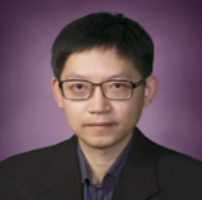
Biography:
Jun Yang is Professor in Mechanical & Materials Engineering and Biomedical Engineering, and Director of WIN 4.0 (Western’s Industry 4.0 Network) at Western University (The University of Western Ontario). He is a Principle Investigator of Micro-Nano-Bio Systems Lab at Western University, Canada and and Fellow of The Canadian Academy of Engineering. His research interests include Additive Engineering, 3D Printing, Printed Electronics, Metamaterials, Acoustics, MEMS/NEMS, Sensors, Lab-on-a-chip/Biochip, Membrane Separation/Filtration, Surface Science and Engineering, Microbial Fuel Cells, SPM (AFM/STM), Polymer Nanocomposites, Nanomaterials, Nanotechnology, Green Technologies. He has published more than 120 papers including multiple cover articles in high-quality journals. He has given ~ 80 plenary/keynote/invited talks on conferences, symposiums, and workshops. He has received numerous awards. Three of his inventions have been transferred to industries for mass production.
Abstract:
Point-of-care (POC) testing offers rapid results of diagnostics near the site of patient care, which can significantly improve health care and management of infectious diseases. Blood tests are the most commonly-used diagnostic methods nowadays because blood analyses provide definitive information of medical conditions of patients. Traditional blood tests are conducted using large-scale blood analyzers, which are equipped in centralized laboratories and only operated by highly trained personnel. The traditional blood tests are time and cost consuming, and labor extensive. With the development of Lab-on-a-chip technology, biochemical experiments can be performed automatically on single chips. However on-chip blood testing is challenging because the whole blood is a complex non-Newtonian fluid with high constituent of blood cells. Here I will present our recent developments of Lab-on-a-chip and Lab-on-a-tip technologies, i.e. integrating chemical biosensors into Lab-on-a-CD devices and integrating surface plasmon resonance (SPR) and surface-enhanced Raman scattering (SERS) on optical fibers, for POC diagnostics of whole blood samples.
Keynote Forum
Mahmoud Almasri
Professor and Principal Investigator, University of Missouri, USA
Keynote: Impedance biosensors for simultaneous detection of food borne pathogens

Biography:
Mahmoud Almasri is an Associate Professor and Principal Investigator in Microsystem Research Lab (MRL) in the Electrical Engineering and Computer Science Department at the University of Missouri, USA. He received BSc and MSc degrees in physics from Bogazici University, Istanbul, Turkey, in 1995 and 1997, respectively, and a PhD in electrical engineering from Southern Methodist University (SMU), Dallas, TX, in 2001. In 2004-2005, he was with Georgia Institute of Technology as a post-doctoral fellow, and a research scientist. He’s research and published materials include uncooled infrared microblometers, micromirrors, Coulter counter, micropost array for mapping cell traction forces, wafer level packaging and three-dimensional microscaffolds for brain slice and neuronal network studies in vitro and in situ.
Abstract:
TBA
Keynote Forum
Seokheun “Sean†Choi
Professor and Director, State University of New York-Binghamton, USA
Keynote: Powering biosensors with disposable biobatteries
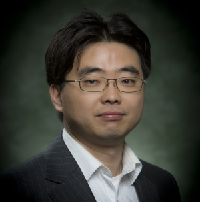
Biography:
Seokheun “Sean” Choi is an Associate Professor in the Department of Electrical & Computer Engineering at State University of New York (SUNY)-Binghamton. Currently, he is running “Bioelectronics & Microsystems Lab” as a Director and “Center for Research in Advanced Sensing Technologies & Environmental Sustainability” as an Associate Director at SUNY-Binghamton. Prior to joining SUNY-Binghamton, he was a research professor in the School of Electronic & Computing Systems at the University of Cincinnati. He received his Ph.D. degree in bioelectronics from Arizona State University in 2011. His current research focuses on next generation “Biosensing and Bioenergy technologies,” including self-powered biosensors, wearable and stretchable sensors, biobatteries, papertronics, and fibertronics. He has been recognized as a pioneer in micro-sized biobatteries and paper-based biosensing systems. Over the years, he has secured funding over $2.5 million from NSF, ONR, and SUNY Research Foundation. He has authored over 100 journal and conference articles, two book chapters, and one book, and hold two U.S. patents.
Abstract:
Effective and rapid diagnostics have the capability to revolutionize public healthcare both in developed and developing countries. One of the key challenges that is critical to address in developing biosensors is to effectively and sufficiently power them. In developing countries, where the electricity grid is not well established and the use of batteries is not cost-effective, power supplies are the most problematic issue for stand-alone and self-sustained devices.
In this talk, Prof. Choi will provide an overview of techniques for powering diagnostic devices for use in both developed and developing countries, as well as detailed discussions of recent advancements in biosensors. He will also discuss next-generation diagnostics and their power source strategies.
Keynote Forum
Anhong Zhou
Professor & Editorial Board Member, Utah State University, USA
Keynote: TBA
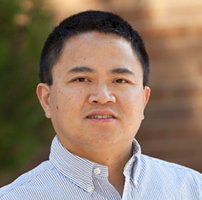
Biography:
Dr. Anhong Zhou is a Associate Professor in the Department of Biological Engineering, Utah State University, USA and Editorial borad member of Journal of Biosensors & Bioelectronics. He earned his PhD (2000) in Biosensors at Hunan University, China. He has published about fifty peer reviewed journal papers and he was author of one book chapter. He has been teaching experience of more than fifteen years at USU. He served as members of American Chemical Society (ACS), Biomedical Engineering Society (BMES), Electrochemical Society (ECS), Institute of Biological Engineering (IBE), Materials Research Society (MRS), American Society for Engineering Education (ASEE) and the International Society for Optical Engineering (SPIE). He served as a reviewer for more than forty peerreviewed journals in the areas of biosensors materials science and engineering biointerface nanotechnology and biomechanics.
His research area is focused on the molecular and cellular sensing and bioimaging, including the fabrication and intergration of chemical sensors, biosensors, and bio-microdevices.
Abstract:
TBA
- Biosensors | Biosensors Applications | Transducers in Biosensors| Bioelectronics | Biosensors for Imaging | Environmental Biosensors | Gas Sensors | Bioengineering Applications
Location: Vancouver

Chair
Jun Yang
Westerns Industry 4.0 Network, Western University, Canada
Session Introduction
Everardo Vargas-Rodriguez, Ana Dinora Guzman-Chavez
Universidad de Guanajuato, Mexico
Title: High sensitivity refractive index sensor based on a stack of layers at the tip of an optical fiber
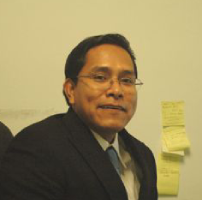
Biography:
Everardo Vargas-Rodriguez completed a MSci in Electronics at the Universidad de Guanajuato, Mexico. Afterwards, he received a PhD in Optoelectronics at the University of Southampton of the United Kingdom in 2007. He joined the University of Guanajuato since 2007, and later he was appointed as a Director of the Department for Multidisciplinary Studies were he served from 2008-2016. Currently, he is a professor and additionally is serving as Academic Editor of the Journal of Sensors. His research interest is focused on the design of optoelectronics sensors and fiber lasers.
Abstract:
Refractive Index (RI) sensors are important for different biosensing applications and there are several ways to implement them. From these fiber optical sensors are very interesting since can be miniaturized and integrated into a simple and small device. The fiber optic sensors can be based on Bragg gratings, long period gratings, interferometers and tapers. Among these the Fabry-Perot interferometer (FPI) is a very popular option since it can be fabricated in different ways at the tip of a single mode fiber, which has a diameter of 125 µm. These sensors measure the refractive index of the medium surrounding the optical fiber, which can be either gas or liquid. Therefore, it can be convenient for some applications to have the RI sensor at the tip of an optical fiber since this can be easily introduced into the sample. Moreover, typical FPI formed at the tip of the optical fiber has a reflection spectrum with fringes reaching an amplitude of 4% in air, and this amplitude is varied as the RI of the sample is changed. In this work a high sensitivity refractive index sensor based on a novel FPI, formed by a stack of 3 layers at the tip of a fiber optic, it is presented. Here, our FPI generates a reflectivity spectrum with fringes reaching an amplitude up to 60%, which is considerably higher than the typically obtained with FPI formed at the optical fibers. Nominally, this increment in reflectivity helps to enhance the sensing capabilities of the sensor, particularly the resolution and the sensitivity. The sensor can measure, ideally, a refractive index from 1 to 3.4. Moreover, a resolution of around 30 dB/RIU can be achieved from the refractive index range from 1 to 1.8, this dynamic range is of interest for many biosensing applications. Some experimental results are provided to support the modelling.
Farhad Khosravi
BioDirection, Inc., USA
Title: Development of silicon nanowire technology for biomarker testing
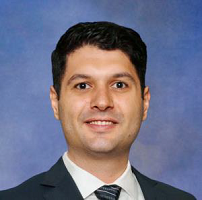
Biography:
Farhad Khosravi has expertise in applying nanotechnology to the development of in vitro diagnostic devices (IVD). His background in bioengineering and biomedical engineering in combination with his understanding of nanomaterials has enabled him to follow his passion for nanomedicine and nanodiagnostics. He first became interested in the intersection of nanomaterials and biosensors when completing his BS in Biomedical Engineering from the University of Louisville (UofL) where he first studied carbon nanotubes (CNT). During his doctoral work at Worcester Polytechnic Institute (WPI), he invented a novel CNT microarray biosensor platform for capture and detection of cancer cells. This research introduced a new philosophy for liquid biopsy useful for point-of-care diagnostics. Currently, Farhad is employed at BioDirection where he is developing silicon nanowire FET technology used in a biosensor platform for the detection of biomarkers associated with traumatic brain injury (TBI).
Abstract:
Statement of the Problem: Traumatic brain injury (TBI) is a widespread problem afflicting all segments of the population. In most cases, concussion or mild traumatic brain injury is diagnosed based on a range of subjective, symptom-based tests that are frequently inconclusive. An objective point-of-care system able to diagnose TBI in minutes could have significant benefits, potentially leading to faster and more appropriate treatment. BioDirection, Inc. is a privately held medical device company is developing a novel rapid point-of-care technology for the objective diagnosis and management of traumatic brain injuries. The company’s lead product, the Tbit™ blood test, is being developed to deliver biologically based results to confirm a concussion accurately in minutes.
Methodology & Theoretical Orientation: Tbit™ platform test measurement is based on a well-established antigen-antibody interaction. The binding of antigen to antibodies located on the surface of the nanowire results in the change of electric field on the surface of the nanowire, which affects the conductivity of the nanowire and can be reliably measured using electronic means. Silicon nanowires offer significant advantages compared to more traditional approaches, allowing femtomolar sensitivity (in the range of 1000 of molecules), small sample volume (mcL range), fast measurement time (seconds) and tolerance to matrix effects.
The Tbit™ sensor was developed using semiconductor manufacturing processes. Single-crystal silicon nanowires were synthesized using metal nanoparticle-catalyzed chemical vapor deposition. Automated nanowire deposition onto the silicon wafer, followed by conventional photolithography, resulted in a multiplex, individually addressable immuno-FET sensor device. Antibodies can be attached to the surface through conventional silane chemistry.
Findings: Analytical characterization of the devices demonstrates that the response is proportional to the concentration of analyte and the response has a good correlation with predicted nanowire behavior.
Conclusion & Significance: We have shown a mass-producible, cost-effective, reliable and reproducible silicon nanowire field-effect transistor (FET) that can be used for biosensing and Tbit™ test. Most importantly we have been able to demonstrate the analyte detection directly in the blood. Application of this technology to mTBI diagnosis promises fast delivery of actionable information about a patient’s state.
Wonseok Lee
Professor, Korea University, South Korea
Title: Red blood cell membrane functionalized electrochemical biosensor for detection of fibrinogen

Biography:
Wonseok Lee is a Research Professor of Department of Control and Instrumentation Engineering in Korea University, South Korea. His research expertise on Nano/Bio technology.
Abstract:
TBA
Nesrine Amin Elessawy
Arab Academy for Science and Technology, Egypt
Title: Wearable sensors for real time health monitoring using e-tattoo patches

Biography:
Nesrine Amin Elessawy is from Electronics and Communication Department, Arab Academy for Science, Technology & Maritime Transport (AASTMT), Alexandria, Egypt. She has published one confernece paper and 02 articles.
Abstract:
The aim of this paper is to highlight the latest technologies and applications in the field of bioelectronics using wearable sensor techniques and in real time for health monitoring tracking sensors. The main work of this paper focused on special techniques of using special kind of patches made of graphene called e tattoos that are mostly flexible, thin, and stretchable. These kind of e tattoos are like epidermal sensors type that emerge a group of truly wearable electronics together to read and measure different biological signals like heart rates, breath rate, skin temperature, and sweat rates, and then to be sent to the person’s device via certain network connection to be analysed at any time. These sensors are considered to take these measurements and process it in real time, to let the person or the patient track their health continuously and be alerted whenever they need about their health status. Those kind of graphene sensors are the key technologies for nanomaterials that help and contributes to health, wellness, home rehibition, and other industries.
Joohyung Park
Korea University, South Korea
Title: Electrochemical Measurement and Numerical Analysis of Bio-Conjugation Between amyloid fibrils and Metal Ions
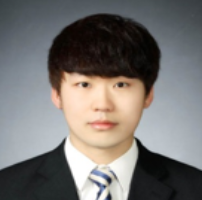
Biography:
Joohyung Park is currently doing his PhD course in Department of Control and Instrumentation Engineering, Korea University, Sejong, South Korea. His research focuses on electrochemical sensors for detecting bio-molecules and toxic ions based on carbon, gold, ITO and various functionalized electrodes. He is also interested in measurements of mechanical properties of nano-materials and structure for detecting toxic ions.
Abstract:
With the remarkable developments in the fields of nanoscale research and industry, the detection of heavy metal ions in water and the purification of water has become important. Therefore, it is an important issue to measure the affinity between various toxic substances and filters in order to know purification materials and purification efficiency. Here, we detected the affinity of metal ion and amyloid by CV curve analysis using β-Lactoglobulin functionalized screen printed carbon electrode (SPCE). It is not only the basic research of amyloid-based filter technology, but it can also be applied to metal ion sensors.





